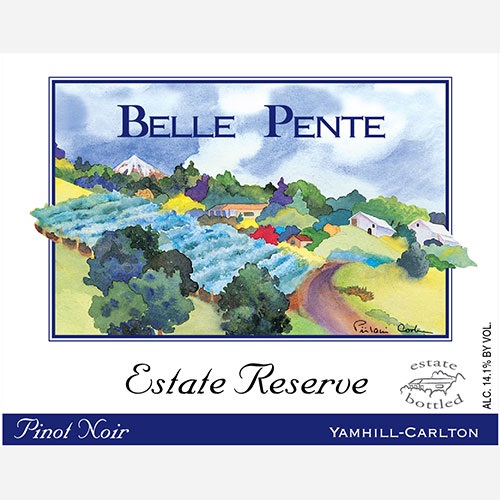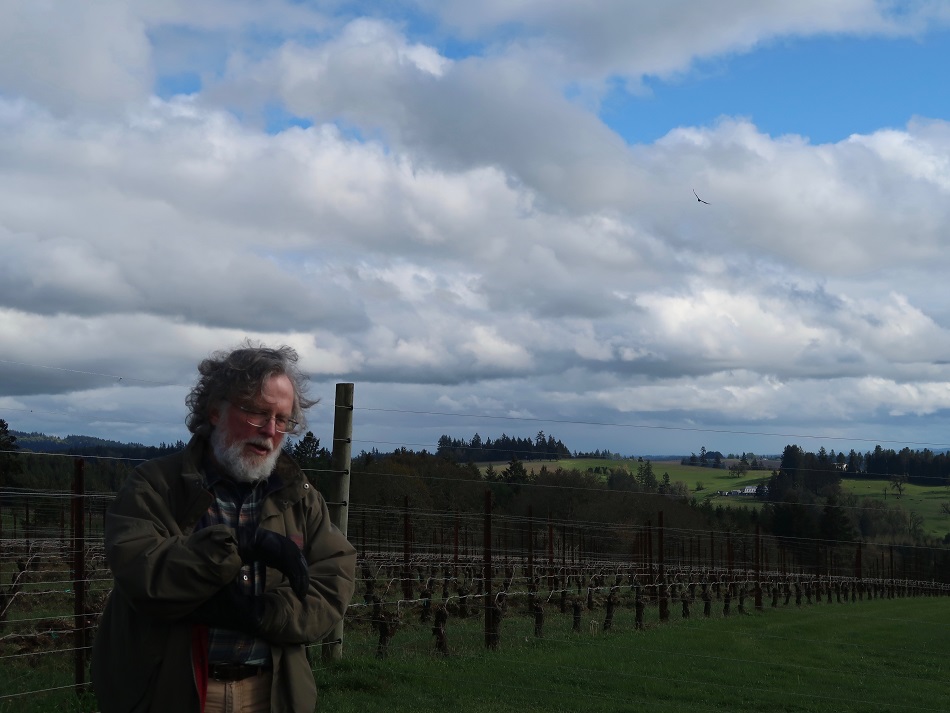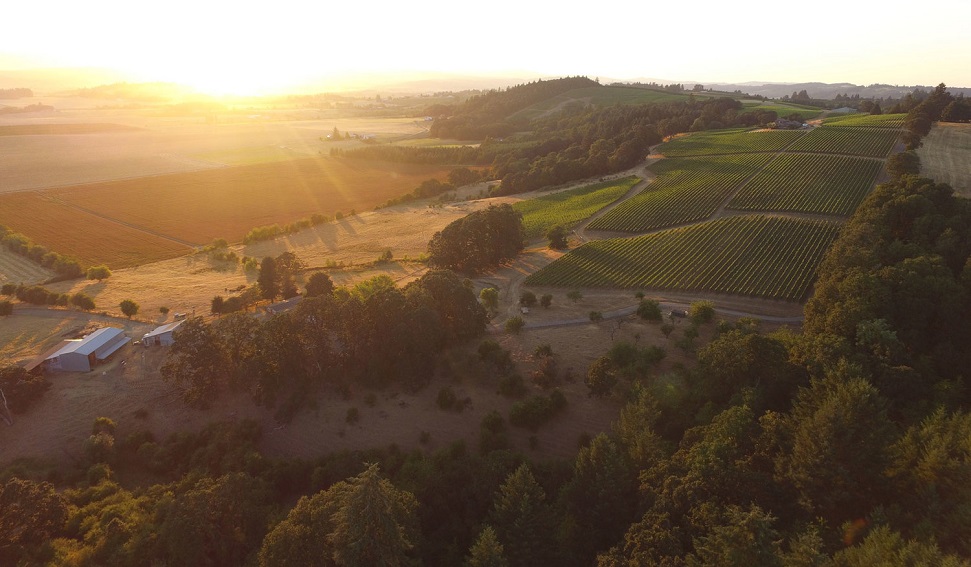Belle Pente, Willamette Valley
California Sales Only

| Region | Oregon |
| Appellation | Yamhill-Carlton |
| Producer | Brian and Jill O' Donnell |
| Founded | 1992 |
| Website | bellepente.com |
Brian and Jill O’Donnell’s Belle Pente Vineyard, in Yamhill-Carlton, has produced some of the Willamette Valley’s most graceful Pinot Noirs since 1996.
—Josh Raynolds, Vinous Media, August 2020
Belle Pente is one of the storied properties of Oregon’s nascent winemaking days and we are particularly proud to represent the O’Donnells and their wines.

Jill O’Donnell hails from Minnesota; Brian, a first-generation Irish-American, from New York City, and they met working in California. In 1992 they purchased what would become Belle Pente, planted their vines in 1994, and built their 3-level, gravity-operated winery in 1996 in time for their first harvest. From the first they were interested in organics and now farm their 18 acres of vines with both organic and biodynamic methods. In addition, they are firm believers in dry farming.
Two-thirds of what they make is Pinot Noir and two-thirds is from their own vines. Production averages 4,500 cases. Their wines are all about elegance, with a breadth of textures and flavors that can astonish. They remain among the most respected of Oregon’s producers.

Notes on farming from Brian in February, 2019:
We’ve been farming to organic standards for 20 years, and started incorporating some biodynamic practices 15 years ago, but have never sought certification for anything (mostly because of the paperwork involved) … our current program is somewhere between a certified organic and Demeter certified bd … we have tons of biodiversity of flora and fauna including an integrated livestock operation, make our own compost, green manure cover crops, no synthetic fertilizers, pesticides, or herbicides, use only OMRI registered fungicides (primarily mineral oil, sulfur, seaweed, and whey), no irrigation, apply BD preps on an “as needed” basis, and follow the Thun BD calendar for guidance on key activities like pruning and harvest … probably a few other things I’m forgetting …
On SO2:
We’ve always taken a pragmatic (vs dogmatic) approach to SO2 …
For whites, there is no SO2 added until right before bottling … the juice is allowed to oxidize slightly before fermentation, and then is protected by temperature and CO2 during a long, slow fermentation … we typically bottle with free SO2 in the mid-to-high 20s (ppm) with total SO2 just a little higher, and well below sensory thresholds levels.
For reds, there is a modest dose added during processing (to inhibit non-Saccharomyces yeast strains), a second one after malolactic fermentation is completed (usually the summer after harvest), and a final adjustment to get free SO2 to the mid-to-high 20s before bottling, again managing the total SO2 level to well below sensory thresholds.
The Wines
| Wine | Blend | Description |
|---|---|---|
| Pinot Gris, Willamette Valley | Pinot Gris | The domain's flagship white. 100% estate grown in the Yamhill-Carlton AVA, whose marine sedimentary soils impart a compelling savory saline quality and stony minerality. Aged half in wood and half in stainless steel. |
| Pinot Noir, Willamette Valley | Pinot Noir | Grapes are from four vineyards in top appellations in Willamette Valley--Yamhill-Carlton and Dundee Hills. The house style emphasizes freshness, complexity, focus, elegance and balance. |
| Pinot Noir, Yamhill-Carlton | Pinot Noir | This is the de-classified good stuff--the barrels that didn't make the cut for the Estate bottling. It comes from all the estate's plantations and represents a nicely diverse mix of clones and vine age (practically all planted in the last century). The percentage of new wood in the barrel regiment is quite low, roundabout 15%. |
| Murto Vineyard, Dundee Hills | Pinot Noir | Murto is an old vineyard planted in 1978 by Mike and Robin Murto. It grows high in the Dundee Hills, and six acres are dedicated to Belle Pente. Aging can be as long as eighteen months and the percentage of new wood can be up to 30%. Production ranges from 400-600 cases plus magnums. |
| Belle Pente Vineyard, Yamhill-Carlton | Pinot Noir | Of the 16 acres of vines on the estate, 12 are planted to Pinot Noir, in various blocks, elevations, orientations, and clones. Elevation ranges from 240 to 500-feet, ensuring good air and water drainage (think frost when it comes to air) and ripening (not too low nor too high). Orientation goes from Southeast to southwest, and the soil is the shallow, dry sedimentary stuff known as willakenzie. Farmed organically since 2000, with biodynamic methods from 2005 onwards. |
| Belle Pente Estate Reserve, Yamhill-Carlton | Pinot Noir | A cellar selection of the best barrels as well as a vineyard selection of the best blocks, and they would be two: the original one-acre block planted in 1994 to several clones, and the steep, southwest facing 1.5-acre block planted in 1998 to the Wadensvil clone. Aging in barrel can go as long as eighteen months and the percentage of new wood can be as high as 50%. Production ranges from 200-400 cases plus magnums. |